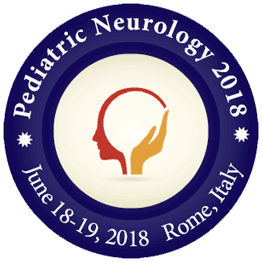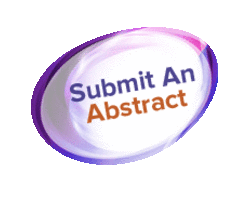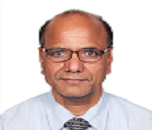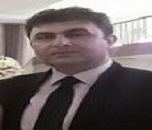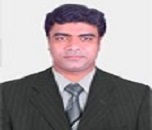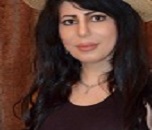Renowned Speakers
We’ve invited the top most influential speakers from around the world to give inspirational talks and lead practical workshops.
Conference Information
About Conference
PULSUS brings in a new spin on conferences by presenting the latest scientific improvements in your field. Listen to motivating keynotes from thought leaders, or rub elbows with pioneers across the globe. Rome is all set for an amazing event as PULSUS proudly presents the “International Conference on Advancements in Pediatric Neurology and Care” slatted on June 18-19, 2018 at Rome, Italy.
Pediatric neurology or child neurology refers to a specialized branch of medicine that deals with the diagnosis and management of neurological conditions in neonates (newborns), infants, children and adolescents. The discipline of child neurology encompasses diseases and disorders of the spinal cord, brain, peripheral nervous system, autonomic nervous system, muscles and blood vessels that affect individuals in these age groups. Overall, about 40% to 50% of the patients treated in a typical pediatric neurology practice have epilepsy, while 20% have learning difficulties or developmental problems and 20% are suffering from headaches. The remainder are treated for rare or unusual conditions such as metabolic or genetic disease. Many centers are equipped with the specialized facilities and knowledge needed to treat very specific disorders such as rare neurodegenerative conditions, intractable epilepsy or pediatric stroke.
Sessions / Tracks
Session 01: Child Neurology
Pediatric neurology deals with the analysis and management of neurological conditions in newborns, infants, children and adolescents. The discipline of child neurology involves Cerebrovascular Disease, Demyelinating Disease, Developmental and Behavioral Problems, Genetic Disorders that affect people in these age groups. The advancements paved way for the pediatric neurologists to deal with conditions that vary considerably, from relatively simple disorders to more complex and infrequent conditions such as metabolic disease or Neurodegenerative Disorders.
Related Conferences
Pediatric Diseases Conference and Diagnostic Pathology conference July 13-14, 2018 Toronto, Canada; Pediatrics Primary Care Conference September 03-04, 2018 Zurich, Switzerland; Pediatric Neurology Conference January 03-05, 2018 London, UK; Cerebral Palsy Conference & Developmental Medicine Conference March 21- 24, 2018 Auckland, New Zealand; Parkinson’s Disease Conference October 04-07, 2018 Seville, Spain; Parkinson Disease Conference and Movement Disorder Conference October 05-09, 2018 Hong Kong, China; Neuromuscular Diseases Conference & Electrodiagnostic Medicine Conference October 10-13, 2018 Washington, United States
Related Societies & Associations
Child Neurology Society (CNS); European Pediatric Neurology Society (EPNS); Infantile Seizure Society; American Pediatric Society / Society for Pediatric Research (APS/SPR); Belgian Society of Pediatric Neurology (BSPN); Canadian Association of Child Neurology (CACN); Asia Pacific Pediatric Association
Session 02: Cerebral Palsy
A heterogeneous group of conditions involving changeless non-progressive central motor dysfunction that influence muscle tone, posture, and development are alluded on Concerning illustration Cerebral Palsy (CP). These states normally happen because of developing infantile or fetal brain resulting from a variety of causes. Various additional symptoms frequently go with primary motor abnormalities, including altered sensation or perception, intellectual disability, communication and behavioral difficulties, seizure disorders, and musculoskeletal complications. Despite the underlying etiology itself will be not progressive, those clinical statement might change over run through as the mind matures. There is no test that confirms or standards out cerebral paralysis. Long term medication incorporates physical and other therapies, medications and sometimes surgery.
Related Conferences
Pediatric Conference September 19-20, 2018 Singapore; Pediatrics Conference October 18-20, 2018 Warsaw, Poland; Stroke Congress October 17-20, 2018 Montreal, Canada; Neurology Congress January 12-13, 2018 Dubai, United Arab Emirates; Neurology Conference and Brain Disorders Conference March 19-21, 2018 Valencia, Spain; Neurology Conference July 12-13, 2018 Paris, France; Brain Disorders Conference August 05-10, 2018 Castelldefels, Spain
Related Societies & Associations
Child Neurology Society of the Philippines; Society for Neuroscience; Society of Pediatric Nurses; Texas Pediatric Society; American Board of Pediatric Neurological Surgery (ABPNS); Child Neurology Foundation (CNF); North Carolina Pediatric Society
Session 03: Cerebrovascular Disease & Cure
Cerebrovascular disorders refer to a number of conditions in kids that are regularly linked to congenital malformations of the arteries or veins that circulate the blood supply all around the brain. Many of these conditions could build the risk for Hemorrhage (excessive bleeding) or stroke due to compromised blood flow. Cerebrovascular disorders are generally rare in children, but among them are: Aneurysms, Arteriovenous Malformations (AVMs), Moyamoya Disease, Vein of Galen malformations. Conventional Ultrasound, Transcranial Doppler Ultrasound, Computed Tomography, Transcranial Doppler Ultrasound are some of the imaging approach to Cerebrovascular Disease
Related Conferences
Pediatrics Conference, Neonatology Conference and Geriatrics Conference October 26-27, 2018 Osaka, Japan; Pediatric Neurology Conference November 19-20, 2018 Lisbon, Portugal; Neurodegenerative Diseases Conference June 17–21, 2018 Colorado, US; Neuroscience Meeting May 13-16, 2018 Vancouver, Canada; Developmental Neuroscience Meeting May 22-25, 2018 Nara, Japan; Neuroscience Congress July 7-11, 2018 Berlin, Germany; Neuroscience Conference April 11-15, 2018 Solden, Austria
Related Societies & Associations
International Society for Pediatric Neurosurgery (ISPN); Canadian Neurological Society (CNS); Canadian Pediatric Society (CPS); American Society of Pediatric Neuroradiology (ASPNR); Association of Child Neurology Nurses (ACNN); International Child Neurology Association (ICNA); European Academy of Pediatrics
Session 04: Demyelinating Disease & Diagnosis
A Condition in which damage occurs to the protective covering (myelin sheath) that surrounds nerve fibers in your brain and spinal cord is termed as Demyelinating disease. Nerve impulses slow or even stop, when the myelin sheath is damaged, causing neurological problems. Demyelinating disease may be monophasic or chronic in children. Acute Disseminated Encephalomyelitis and Clinically Isolated Syndromes, including Optic Neuritis and Transverse Myelitis are typical monophasic disorders in children. Improved technologies have led to enhanced recognition of these disorders. Significant advancements have been made over the past 10 years in the recognition, diagnosis, and management of Pediatric Demyelinating Disorders. Several awareness programs are conducted to inform about the clinical course, response to treatment, and disease pathogenesis.
Related Conferences
Pediatric Diseases Conference and Diagnostic Pathology conference July 13-14, 2018 Toronto, Canada; Pediatrics Primary Care Conference September 03-04, 2018 Zurich, Switzerland; Pediatric Neurology Conference January 03-05, 2018 London, UK; Cerebral Palsy Conference & Developmental Medicine Conference March 21- 24, 2018 Auckland, New Zealand; Parkinson’s Disease Conference October 04-07, 2018 Seville, Spain; Parkinson Disease Conference and Movement Disorder Conference October 05-09, 2018 Hong Kong, China; Neuromuscular Diseases Conference & Electrodiagnostic Medicine Conference October 10-13, 2018 Washington, United States
Related Societies & Associations
Child Neurology Society (CNS); European Pediatric Neurology Society (EPNS); Infantile Seizure Society; American Pediatric Society / Society for Pediatric Research (APS/SPR); Belgian Society of Pediatric Neurology (BSPN); Canadian Association of Child Neurology (CACN); Asia Pacific Pediatric Association
Session 05: Developmental & Behavioral Problems
A group of psychiatric conditions originating in childhood that involve serious impairment in different areas are Developmental disorders. They are otherwise called Mathew's disorder. Health professionals previously thought that brain disorders such as bipolar disorder, anxiety disorders, or even depression occurred after childhood but now, it is widely proven that these brain disorders can begin in early childhood. Attention-Deficit Disorder (ADD), Angelman Syndrome, Autism Spectrum Disorders, Bipolar Disorder, Central Auditory Processing Disorder (CAPD), Down Syndrome, Expressive Language Disorder, Fragile X Syndrome, Landau-Kleffner Syndrome, Learning Disabilities (LD), Mental Retardation are some of the developmental and behavioral problems.
Related Conferences
Pediatric Conference September 19-20, 2018 Singapore; Pediatrics Conference October 18-20, 2018 Warsaw, Poland; Stroke Congress October 17-20, 2018 Montreal, Canada; Neurology Congress January 12-13, 2018 Dubai, United Arab Emirates; Neurology Conference and Brain Disorders Conference March 19-21, 2018 Valencia, Spain; Neurology Conference July 12-13, 2018 Paris, France; Brain Disorders Conference August 05-10, 2018 Castelldefels, Spain
Related Societies & Associations
Child Neurology Society of the Philippines; Society for Neuroscience; Society of Pediatric Nurses; Texas Pediatric Society; American Board of Pediatric Neurological Surgery (ABPNS); Child Neurology Foundation (CNF); North Carolina Pediatric Society
Session 06: Encephalopathy
Encephalopathy is term generally used to denote brain disease, damage, or malfunction. An altered mental state is the major symptom of encephalopathy. There are numerous and varied causes for encephalopathy; they include infections, anoxia, metabolic problems, toxins, drugs, physiologic changes, trauma, and other causes. Encephalopathy is often considered a complication of a primary problem such as Alcoholic cirrhosis, kidney failure, or anoxia. Early treatments can eliminate, reduce, or halt the symptoms of encephalopathy.
Related Conferences
Pediatrics Conference, Neonatology Conference and Geriatrics Conference October 26-27, 2018 Osaka, Japan; Pediatric Neurology Conference November 19-20, 2018 Lisbon, Portugal; Neurodegenerative Diseases Conference June 17–21, 2018 Colorado, US; Neuroscience Meeting May 13-16, 2018 Vancouver, Canada; Developmental Neuroscience Meeting May 22-25, 2018 Nara, Japan; Neuroscience Congress July 7-11, 2018 Berlin, Germany; Neuroscience Conference April 11-15, 2018 Solden, Austria
Related Societies & Associations
International Society for Pediatric Neurosurgery (ISPN); Canadian Neurological Society (CNS); Canadian Pediatric Society (CPS); American Society of Pediatric Neuroradiology (ASPNR); Association of Child Neurology Nurses (ACNN); International Child Neurology Association (ICNA); European Academy of Pediatrics
Session 07: Genetic Disorders & Treatment
A genetic disorder is caused by an abnormality in an individual's DNA. Abnormalities can be as small as a single-base mutation in just one gene, or they can involve the addition or subtraction of entire chromosomes. Fabry disease: Neurologic Manifestations, Huntington Disease, Krabbe Disease, Metachromatic Leukodystrophy, Mitochondrial Myopathies are some of the genetic disorders. Recent findings state that the genetic disorders can be treated with gene therapy.
Related Conferences
Pediatric Diseases Conference and Diagnostic Pathology conference July 13-14, 2018 Toronto, Canada; Pediatrics Primary Care Conference September 03-04, 2018 Zurich, Switzerland; Pediatric Neurology Conference January 03-05, 2018 London, UK; Cerebral Palsy Conference & Developmental Medicine Conference March 21- 24, 2018 Auckland, New Zealand; Parkinson’s Disease Conference October 04-07, 2018 Seville, Spain; Parkinson Disease Conference and Movement Disorder Conference October 05-09, 2018 Hong Kong, China; Neuromuscular Diseases Conference & Electrodiagnostic Medicine Conference October 10-13, 2018 Washington, United States
Related Societies & Associations
Child Neurology Society (CNS); European Pediatric Neurology Society (EPNS); Infantile Seizure Society; American Pediatric Society / Society for Pediatric Research (APS/SPR); Belgian Society of Pediatric Neurology (BSPN); Canadian Association of Child Neurology (CACN); Asia Pacific Pediatric Association
Session 08: Headache
Pediatric patients often seek medical care mainly because of head ache. Headache onset, duration, and severity, associated symptoms, Family history of migraines, Medication history, Factors that may have precipitated the headache (most often migraine) are the common symptoms in pediatric patients. Migraine is the major problem pediatric patients suffer with.
Related Conferences
Pediatric Conference September 19-20, 2018 Singapore; Pediatrics Conference October 18-20, 2018 Warsaw, Poland; Stroke Congress October 17-20, 2018 Montreal, Canada; Neurology Congress January 12-13, 2018 Dubai, United Arab Emirates; Neurology Conference and Brain Disorders Conference March 19-21, 2018 Valencia, Spain; Neurology Conference July 12-13, 2018 Paris, France; Brain Disorders Conference August 05-10, 2018 Castelldefels, Spain
Related Societies & Associations
Child Neurology Society of the Philippines; Society for Neuroscience; Society of Pediatric Nurses; Texas Pediatric Society; American Board of Pediatric Neurological Surgery (ABPNS); Child Neurology Foundation (CNF); North Carolina Pediatric Society
Session 09: Pediatric Allergy and Infections
Pediatric Allergy provides a deep knowledge on respiratory, allergic, and immunologic diseases in children. It emphasizes the epidemiologic research on the most common chronic illnesses of children asthma and allergies as well as many less common and rare diseases. Swollen or enlarged adenoids and Tonsils are common in children. When the children’s immune system reacts to normal harmless substances present in the environment, children suffer environmental and food allergies. Respiratory Syncytial Virus (RSV) and Human Metapneumovirus, are common causes of pneumonia in young kids and babies. Some of the Allergic reactions in children include red eyes, Atopic Dermatitis (eczema), itchiness, runny nose, Urticaria (hives), an asthma attack and sinusitis.
Related Conferences
Pediatrics Conference, Neonatology Conference and Geriatrics Conference October 26-27, 2018 Osaka, Japan; Pediatric Neurology Conference November 19-20, 2018 Lisbon, Portugal; Neurodegenerative Diseases Conference June 17–21, 2018 Colorado, US; Neuroscience Meeting May 13-16, 2018 Vancouver, Canada; Developmental Neuroscience Meeting May 22-25, 2018 Nara, Japan; Neuroscience Congress July 7-11, 2018 Berlin, Germany; Neuroscience Conference April 11-15, 2018 Solden, Austria
Related Societies & Associations
International Society for Pediatric Neurosurgery (ISPN); Canadian Neurological Society (CNS); Canadian Pediatric Society (CPS); American Society of Pediatric Neuroradiology (ASPNR); Association of Child Neurology Nurses (ACNN); International Child Neurology Association (ICNA); European Academy of Pediatrics
Session 10: Malformations
A structural defect in the body due to abnormal embryonic or fetal development is termed as malformtions. Malformations are of different types such as cleft lip and cleft palate. Congenital malformation is a physical defect present in a baby at birth that can involve many different parts of the body including the brain, heart, lungs, liver, bones, and intestinal tract.
Related Conferences
Pediatric Diseases Conference and Diagnostic Pathology conference July 13-14, 2018 Toronto, Canada; Pediatrics Primary Care Conference September 03-04, 2018 Zurich, Switzerland; Pediatric Neurology Conference January 03-05, 2018 London, UK; Cerebral Palsy Conference & Developmental Medicine Conference March 21- 24, 2018 Auckland, New Zealand; Parkinson’s Disease Conference October 04-07, 2018 Seville, Spain; Parkinson Disease Conference and Movement Disorder Conference October 05-09, 2018 Hong Kong, China; Neuromuscular Diseases Conference & Electrodiagnostic Medicine Conference October 10-13, 2018 Washington, United States
Related Societies & Associations
Child Neurology Society (CNS); European Pediatric Neurology Society (EPNS); Infantile Seizure Society; American Pediatric Society / Society for Pediatric Research (APS/SPR); Belgian Society of Pediatric Neurology (BSPN); Canadian Association of Child Neurology (CACN); Asia Pacific Pediatric Association
Session 11: Movement Disorders & Diagnosis
Dysfunction in the target and velocity of an intended movement is defined as Movement Disorder. Movements disorders are divided into two major categories: Hyperkinetic Movement Disorders and Hypokinetic Movement Disorders. The type of movement disorder includes Tics, Stereotypies, Dystonia, Parkinsonism, Psychogenic Movement Disorder. Medication, Antiseizure medications (e.g., primidone [Mysoline], gabapentin [Neurontin]) Botulinum Toxin injection therapy (BOTOX therapy), and/or surgery are the treatments available for Movement Disorder.
Related Conferences
Pediatric Conference September 19-20, 2018 Singapore; Pediatrics Conference October 18-20, 2018 Warsaw, Poland; Stroke Congress October 17-20, 2018 Montreal, Canada; Neurology Congress January 12-13, 2018 Dubai, United Arab Emirates; Neurology Conference and Brain Disorders Conference March 19-21, 2018 Valencia, Spain; Neurology Conference July 12-13, 2018 Paris, France; Brain Disorders Conference August 05-10, 2018 Castelldefels, Spain
Related Societies & Associations
Child Neurology Society of the Philippines; Society for Neuroscience; Society of Pediatric Nurses; Texas Pediatric Society; American Board of Pediatric Neurological Surgery (ABPNS); Child Neurology Foundation (CNF); North Carolina Pediatric Society
Session 12: Neurocutaneous Disorders & Treatment
Neurocutaneous syndromes are disorders with cutaneous and neurologic anomalies. Some of these disorders are hereditary. The most common disorders found in children are skin lesions. Neuro Fibromatosis (NF), including type 1 (NF1), type 2 (NF2), and schwannomatosis; Tuberous Sclerosis Complex (TSC); and Sturge-Weber syndrome are three neurocutaneous disorders that typically present in childhood. The symptoms may vary associated with each condition. The diagnosis is made with a physical examination and diagnostic tests. Diagnostic tests may include Blood tests, Genetic testing, X-ray, Magnetic Resonance Imaging (MRI), Computed Tomography scan, Electroencephalogram (EEG), Eye examination, Tissue sample of the tumor or skin lesion. Specific treatment will be determined by child's doctor based on age, extend and type of condition, child's tolerance for specific medications, procedures, or therapies, Expectations for the course of the condition.
Related Conferences
Pediatrics Conference, Neonatology Conference and Geriatrics Conference October 26-27, 2018 Osaka, Japan; Pediatric Neurology Conference November 19-20, 2018 Lisbon, Portugal; Neurodegenerative Diseases Conference June 17–21, 2018 Colorado, US; Neuroscience Meeting May 13-16, 2018 Vancouver, Canada; Developmental Neuroscience Meeting May 22-25, 2018 Nara, Japan; Neuroscience Congress July 7-11, 2018 Berlin, Germany; Neuroscience Conference April 11-15, 2018 Solden, Austria
Related Societies & Associations
International Society for Pediatric Neurosurgery (ISPN); Canadian Neurological Society (CNS); Canadian Pediatric Society (CPS); American Society of Pediatric Neuroradiology (ASPNR); Association of Child Neurology Nurses (ACNN); International Child Neurology Association (ICNA); European Academy of Pediatrics
Session 13: Neuromuscular Disorders & Diagnosis
Neuromuscular disorders are common causes of weakness and hypotonia in the infantile period and in childhood. Most neuromuscular disorders are present at birth. There are hundreds of neuromuscular disorders, many with subtypes related to specific genetic causes including Muscular Dystrophy, Spinal Muscular Atrophy, Charcot-Marie-Tooth Disease (CMT), Friedreich’s Ataxia (FA). Accurate diagnosis of specific neuromuscular disorders depends first on identification of which aspect of the peripheral neuromuscular system is affected--the motor neuron in the spinal cord, the nerve root or peripheral nerve, the neuromuscular junction, or the muscle--and then on the determination of the etiology and specific clinical entity. Some neuromuscular disorders can be diagnosed with a blood test alone. Others require a muscle or nerve biopsy.
Related Conferences
Pediatric Diseases Conference and Diagnostic Pathology conference July 13-14, 2018 Toronto, Canada; Pediatrics Primary Care Conference September 03-04, 2018 Zurich, Switzerland; Pediatric Neurology Conference January 03-05, 2018 London, UK; Cerebral Palsy Conference & Developmental Medicine Conference March 21- 24, 2018 Auckland, New Zealand; Parkinson’s Disease Conference October 04-07, 2018 Seville, Spain; Parkinson Disease Conference and Movement Disorder Conference October 05-09, 2018 Hong Kong, China; Neuromuscular Diseases Conference & Electrodiagnostic Medicine Conference October 10-13, 2018 Washington, United States
Related Societies & Associations
Child Neurology Society (CNS); European Pediatric Neurology Society (EPNS); Infantile Seizure Society; American Pediatric Society / Society for Pediatric Research (APS/SPR); Belgian Society of Pediatric Neurology (BSPN); Canadian Association of Child Neurology (CACN); Asia Pacific Pediatric Association
Session 14: Neuropathy
When nerve damage interferes with the functioning of the peripheral nervous system (PNS), Neuropathy occurs. Idiopathic Neuropathy is a condition in which the cause can’t be determined. Types of Neuropathy include Peripheral Neuropathy, Cranial Neuropathy, Autonomic Neuropathy, Focal Neuropathy. Nerve damaging disorders associated with Diabetes Mellitus in children are Diabetic Neuropathies. Hereditary Neuropathies is a condition in which a group of inherited disorders affects the Peripheral Nervous System (PNS). Medical treatment includes physical therapy and if needed, pain medication. Orthopedic surgery may be needed to correct severe foot or other skeletal deformities. Bracing may also be used to improve mobility.
Related Conferences
Pediatric Conference September 19-20, 2018 Singapore; Pediatrics Conference October 18-20, 2018 Warsaw, Poland; Stroke Congress October 17-20, 2018 Montreal, Canada; Neurology Congress January 12-13, 2018 Dubai, United Arab Emirates; Neurology Conference and Brain Disorders Conference March 19-21, 2018 Valencia, Spain; Neurology Conference July 12-13, 2018 Paris, France; Brain Disorders Conference August 05-10, 2018 Castelldefels, Spain
Related Conferences
Pediatric Conference September 19-20, 2018 Singapore; Pediatrics Conference October 18-20, 2018 Warsaw, Poland; Stroke Congress October 17-20, 2018 Montreal, Canada; Neurology Congress January 12-13, 2018 Dubai, United Arab Emirates; Neurology Conference and Brain Disorders Conference March 19-21, 2018 Valencia, Spain; Neurology Conference July 12-13, 2018 Paris, France; Brain Disorders Conference August 05-10, 2018 Castelldefels, Spain
Related Societies & Associations
Child Neurology Society of the Philippines; Society for Neuroscience; Society of Pediatric Nurses; Texas Pediatric Society; American Board of Pediatric Neurological Surgery (ABPNS); Child Neurology Foundation (CNF); North Carolina Pediatric Society
Session 15: Pediatric Neuro-Ophthalmology
The discipline of Neuro-Ophthalmology links the neurosciences with ophthalmology in order to study the ophthalmic manifestations of disorders of the central nervous system. Neuro-ophthalmologists undergo specialized training and expertise in problems of the eye, brain, nerves and muscles. Children with Pediatric Neuro-Ophthalmology suffer a wide range of common and complex conditions, including Optic nerve abnormalities, Pupil abnormalities, Migraine-associated visual changes, Nystagmus (shaking eyes), Eye Movement Disorders, Neurofibromatosis, Double vision, etc. Diagnostic testing, Outpatient care, Inpatient medical care, Surgery, including minimally invasive procedures are the full range of therapies available in market to treat these conditions.
Related Conferences
Pediatrics Conference, Neonatology Conference and Geriatrics Conference October 26-27, 2018 Osaka, Japan; Pediatric Neurology Conference November 19-20, 2018 Lisbon, Portugal; Neurodegenerative Diseases Conference June 17–21, 2018 Colorado, US; Neuroscience Meeting May 13-16, 2018 Vancouver, Canada; Developmental Neuroscience Meeting May 22-25, 2018 Nara, Japan; Neuroscience Congress July 7-11, 2018 Berlin, Germany; Neuroscience Conference April 11-15, 2018 Solden, Austria
Related Societies & Associations
International Society for Pediatric Neurosurgery (ISPN); Canadian Neurological Society (CNS); Canadian Pediatric Society (CPS); American Society of Pediatric Neuroradiology (ASPNR); Association of Child Neurology Nurses (ACNN); International Child Neurology Association (ICNA); European Academy of Pediatrics
Session 16: Seizures
Seizer is a condition in which the normal electrical brain function is temporarily affected when part(s) of the brain receives a burst of abnormal electrical signals. There are many types of seizures and some have mild symptoms. Seizures can be categorized two main groups. Focal seizures, also called partial seizures, happen in just one part of the brain. Generalized seizures are a result of abnormal activity on both sides of the brain. Epilepsy is considered as a chronic condition that is defined by seizures. Lennox-Gastaut syndrome (LGS) is a rare and severe form of epilepsy. Infantile spasm (IS) is an age-specific epileptic disorder of infancy and early childhood. Children with IS typically exhibit epileptic spasms along with the electroencephalographic pattern known as Hypsarrhythmia. Brivaracetam, Carbamazepine, Eslicarbazepine, Ethosuximide, Felbamate, Phenobarbitol, Phenytoin, Topiramate are some of the Antiseizure drugs.
Related Conferences
Pediatric Diseases Conference and Diagnostic Pathology conference July 13-14, 2018 Toronto, Canada; Pediatrics Primary Care Conference September 03-04, 2018 Zurich, Switzerland; Pediatric Neurology Conference January 03-05, 2018 London, UK; Cerebral Palsy Conference & Developmental Medicine Conference March 21- 24, 2018 Auckland, New Zealand; Parkinson’s Disease Conference October 04-07, 2018 Seville, Spain; Parkinson Disease Conference and Movement Disorder Conference October 05-09, 2018 Hong Kong, China; Neuromuscular Diseases Conference & Electrodiagnostic Medicine Conference October 10-13, 2018 Washington, United States
Related Societies & Associations
Child Neurology Society (CNS); European Pediatric Neurology Society (EPNS); Infantile Seizure Society; American Pediatric Society / Society for Pediatric Research (APS/SPR); Belgian Society of Pediatric Neurology (BSPN); Canadian Association of Child Neurology (CACN); Asia Pacific Pediatric Association
Session 17: Neurotrauma
Acquired Brain Injury (ABI) and Spinal Cord Injury (SCI) are the two complex conditions of neurotrauma. Acquired Brain Injury results in problems with attention, planning and interacting with others and Spinal Cord Injury leads to permanent paralysis. With the emerging technologies there has been many improvements and advancements in the acute care of neurotrauma. Pediatric Neurologists characterize minor head injury in youngsters as a physical indication of blunt trauma to the scalp, skull, or cerebrum in a newborn child or kid who is alert to voice or light touch. A type of Traumatic Brain Injury (TBI) in which a buildup of blood occurs between the dura mater and the skull is otherwise called, Epidural Hematoma (EDH). It happens phenomenally among the large population of infants and children seen in emergency departments and physician offices for head trauma.
Related Conferences
Pediatric Conference September 19-20, 2018 Singapore; Pediatrics Conference October 18-20, 2018 Warsaw, Poland; Stroke Congress October 17-20, 2018 Montreal, Canada; Neurology Congress January 12-13, 2018 Dubai, United Arab Emirates; Neurology Conference and Brain Disorders Conference March 19-21, 2018 Valencia, Spain; Neurology Conference July 12-13, 2018 Paris, France; Brain Disorders Conference August 05-10, 2018 Castelldefels, Spain
Related Societies & Associations
Child Neurology Society of the Philippines; Society for Neuroscience; Society of Pediatric Nurses; Texas Pediatric Society; American Board of Pediatric Neurological Surgery (ABPNS); Child Neurology Foundation (CNF); North Carolina Pediatric Society
Session 18: Stem Cells & Regenerative Neurology
Stem cells have the amazing capacity to differentiate into any body cell. They are not specialized. Stem cell therapies are used to repair the damaged cells and restore their functions. Regenerative Neurology is to regenerate and restore functions of the damaged nervous system. Several researches in the field of tissue engineering and molecular biology which deals with the process of replacing, engineering or regenerating human cells, tissues or organs to restore or establish normal function, lead to the discovery of regenerative medicines.
Related Conferences
Pediatrics Conference, Neonatology Conference and Geriatrics Conference October 26-27, 2018 Osaka, Japan; Pediatric Neurology Conference November 19-20, 2018 Lisbon, Portugal; Neurodegenerative Diseases Conference June 17–21, 2018 Colorado, US; Neuroscience Meeting May 13-16, 2018 Vancouver, Canada; Developmental Neuroscience Meeting May 22-25, 2018 Nara, Japan; Neuroscience Congress July 7-11, 2018 Berlin, Germany; Neuroscience Conference April 11-15, 2018 Solden, Austria
Related Societies & Associations
International Society for Pediatric Neurosurgery (ISPN); Canadian Neurological Society (CNS); Canadian Pediatric Society (CPS); American Society of Pediatric Neuroradiology (ASPNR); Association of Child Neurology Nurses (ACNN); International Child Neurology Association (ICNA); European Academy of Pediatrics
Session 19: Pediatric Neuroinformatics & Brain Mapping
Neuroinformatics is the exploration field which is focused on handling the neuroscience information through investigative apparatuses and computational models. Coordination and examination of progressively huge volume, high-dimensional and fine-grain trial information should be possible by the assistance of neuroinformatics. Information system incorporates multi-sort and multi-scale information including yet not constrained to Neuroscience Time Series, Atlas-Based, Brain Maps and Ontology information. Informatics System is only intended to perform such capacities. Applications and apparatuses are highlighted for getting, putting away, distributing, sharing, investigating, displaying and forecast, reenactment and perception as a piece of this framework supporting Neuroscience research. Neurocritical care is the claim to fame preparing in pediatric neurointensive tend to pediatric intensivists and pediatric neurologists Neurocritical care has a more extensive utilization of neuromonitoring and neuroprotective procedures in the pediatric emergency unit, both essential neurological and essential non-neurological infection states.
Related Conferences
Pediatric Diseases Conference and Diagnostic Pathology conference July 13-14, 2018 Toronto, Canada; Pediatrics Primary Care Conference September 03-04, 2018 Zurich, Switzerland; Pediatric Neurology Conference January 03-05, 2018 London, UK; Cerebral Palsy Conference & Developmental Medicine Conference March 21- 24, 2018 Auckland, New Zealand; Parkinson’s Disease Conference October 04-07, 2018 Seville, Spain; Parkinson Disease Conference and Movement Disorder Conference October 05-09, 2018 Hong Kong, China; Neuromuscular Diseases Conference & Electrodiagnostic Medicine Conference October 10-13, 2018 Washington, United States
Related Societies & Associations
Child Neurology Society (CNS); European Pediatric Neurology Society (EPNS); Infantile Seizure Society; American Pediatric Society / Society for Pediatric Research (APS/SPR); Belgian Society of Pediatric Neurology (BSPN); Canadian Association of Child Neurology (CACN); Asia Pacific Pediatric Association
Market Analysis
Neurology is a branch of medicine which deals with nervous system disorders. Pediatric Neurology deals with the treatment and diagnosis of all types of disorders related to the peripheral and the central nervous system in children. Pediatric neurological disorders include muscular dystrophy, epilepsy, and paroxysmal disorders. There are various age groups considered in a pediatric patient pool such as infants, children, neonates, and adolescents. The neonates are considered newborn infant, infants are referred in age group up to two years. The adolescents are considered in the age range of 10 years to 19 years.
Pediatric Neurology Global Market
The pediatric neurology market includes few medical devices, which are used in the diagnosis and treatment of pediatric neurological disorders such as EEG (electroencephalogram) and brain stimulation devices. Various therapies are available for the treatment of pediatric neurological disorders such as intrathecal drug therapies, lumbar puncture therapies, and pediatric neurological evaluations. Significant number of new product are introduced in the market because of extensive research and development. This results in increasing patient demand for efficient and effective treatment modality. Most of the companies are focusing on research and development activities toward novel drug development, which in turn is contributing to the market growth for pediatric neurology. Development of the worldwide pediatric neurology market is likely to be determined by developing economies in Asia, where the occurrence of the disorder is moderately high as compared to other regions.
Why Rome?
Rome has many universities where students can pursue their master degrees in Pediatric Neurology. Tor Vergata University of Rome is one of the famous universities in Rome where masters in Child Neurology is taught and researches based on pediatric neurology are carried out. Rome also has good infrastructure public and private hospitals which has highly equipped instruments and can treat brain disorders.
Rome is the capital city of Italy and of the Lazio region. With 2.9 million residents in 1,285 km2 (496.1 sq mi), it is also the country’s largest and most populated commune and fourth-most populous city in the European Union by population within city limits. The Metropolitan City of Rome has a population of 4.3 million residents. The city is in the central-western portion of the Italian Peninsula, within Lazio (Latium), along the shores of Tiber River. Vatican City is an independent country within the city boundaries of Rome, the only existing example of a country within a city: for this reason, Rome has been often defined as capital of two states
Pediatric Neurology Disorders
- Cerebrovascular Disorder
- Cerebral Palsy
- Demyelinating Disease
- Developmental & Behavioral Problems
- Encephalopathy
- Genetic Disorders
- Headache
- Pediatric Allergy and Infections
- Malformations
- Movement Disorders
- Neurocutaneous Disorders
- Neuromuscular Disorders
- Seizures
- Neurotrauma
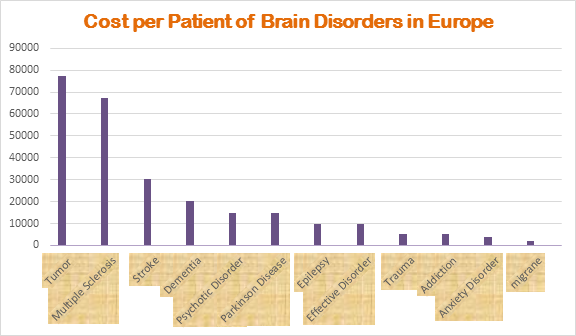
According to a report published by UMKC School of Medicine, about 2.7 million people in the U.S. have epilepsy and more than 45,000 new cases are diagnosed every year. Epilepsy is more common than multiple sclerosis, cerebral palsy, and Parkinson’s disease combined. Rising incidence and prevalence of neurological disorders in pediatric patient pool explains the need for treatment of neurological disorders in the region, and thereby increases the market potential for neurology drugs. Therefore, rising incidence of neurological disorders is a major factor driving the global pediatric neurology market. In addition, rising demand for advanced diagnosis and treatment of neurological disorders, intra-industry competition, and increasing new entrants are boosting the market growth.
The global pediatric neurology market has been segmented based on age group, service and treatment, subspecialty, and region. Based on age group, the global pediatric neurology market has been segmented into infants, neonates, children, and adolescents. Based on service and treatment, the market has been segmented into intrathecal drug therapy, electroencephalogram, lumbar puncture, neurological evaluation, and vagal nerve stimulation. Based on subspecialty, the market has been segmented into neuromuscular, neuro oncology, neuroimmunology, stroke, neonatal neurology, and others.

Geographically, the pediatric neurology market has been divided into North America, Europe, Asia Pacific, Latin America, and Middle East & Africa. North America is anticipated to account for the highest share of the pediatric neurology market during the forecast period, followed by Europe and Asia Pacific. The market in Asia Pacific is projected to expand at a significant CAGR during the forecast period. Globally, market players involved in the pediatric neurology treatment and services have implemented new strategies and technological advancements. In terms of country, the U.S. dominates the pediatric neurology market with a significant market share, followed by the U.K. New launch of pediatric neurology devices worldwide is projected to drive the growth of the market.
Stem Cell Therapy
Pediatric Neurologist with Stem Cell Therapy treat diseases such as
-
NDD
-
Autism
-
Intellectual Disability
-
Cerebral Palsy
-
Duchenne Muscular Dystrophy
Clinical Evidence of Cerebral Palsy
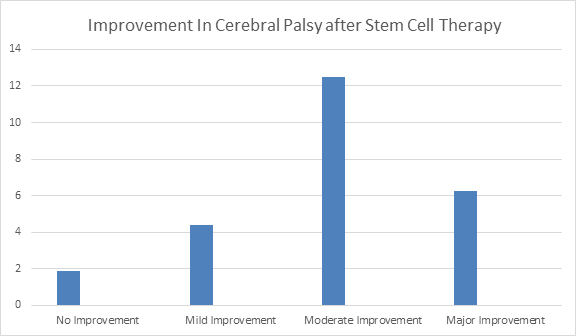
Pediatric Neurology Industries
Major players operating in the global pediatric neurology market include
- Medtronic
- Elana Inc.
- Courtagen
- Ethicon
- Nemours
- Inova Health System


